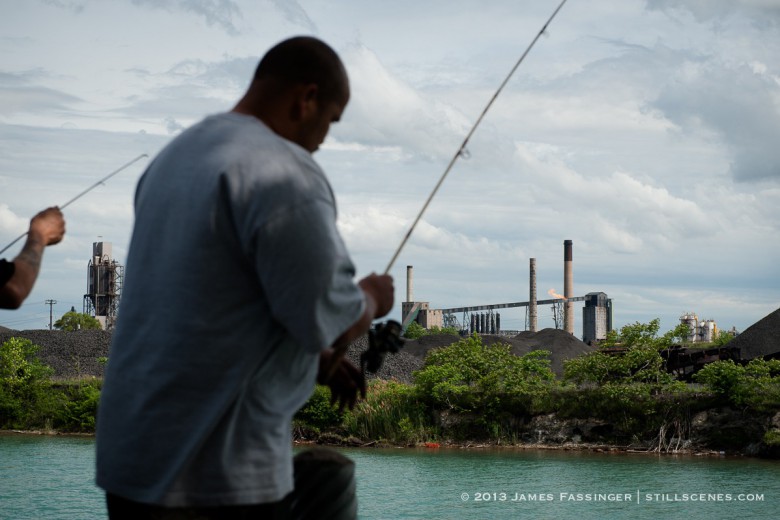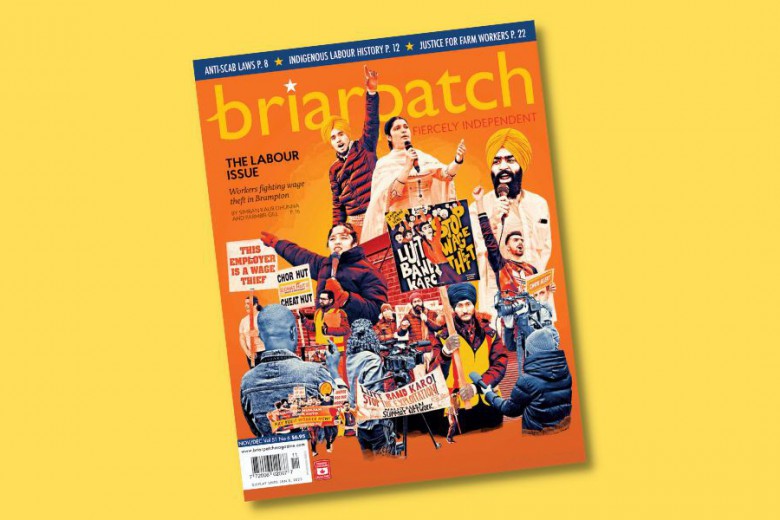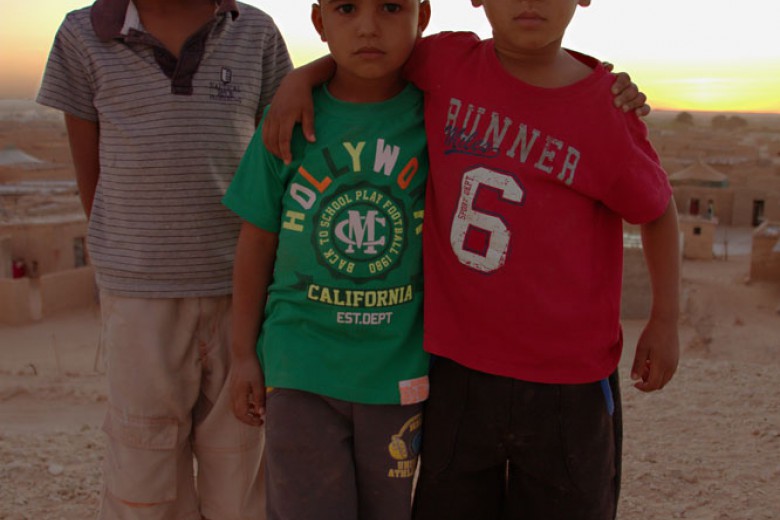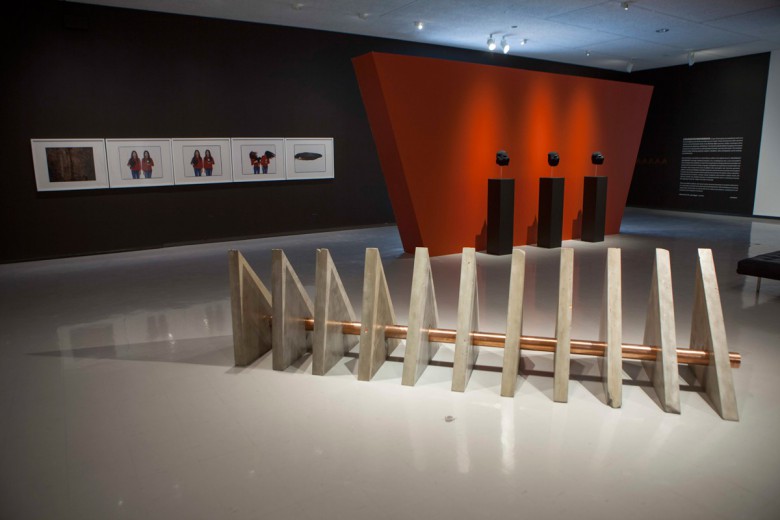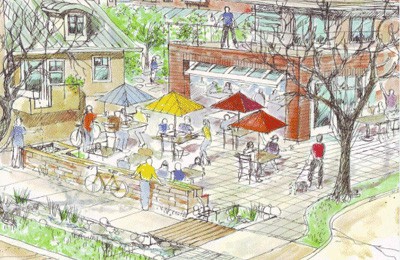
“Development that meets the needs of the present without compromising the ability of future generations to meet their own needs.”
— The World Commission on Environment and Development’s definition of sustainability
As Saskatchewan celebrates a period of economic growth and prosperity not seen since the first three decades of the 20th century, it does so at a precarious time for the planet. Saskatchewan’s boom, fueled by the extraction of non-renewable resources such as oil and uranium and a spike in grain prices, occurs as evidence grows that we are rapidly approaching the limits of the planet’s carrying capacity. Saskatchewan must deal with this newfound wealth and a corresponding population influx amid the global realities of peak oil, climate change, ecosystem destruction, economic meltdown and extensive species loss.
The question for Saskatchewanians, then, is what path do we follow? Will we press ahead under the old paradigm of unchecked suburban development and resource extraction that will only make our eventual shift to a less resource intensive economy more difficult, or will we choose a more sustainable way? Despite Saskatchewan’s major population centres’ continuing pursuit, for the most part, of conventional suburban development, a sustainable development movement is burgeoning in both rural and urban areas of the province. In places such as the town of Craik, the rural municipality of Rudy and Saskatoon’s River Landing, sustainable development projects are laying the groundwork for the inevitable revolution ahead.
The Craik Sustainable Living Project
“The salient fact about life in the decades ahead is that it will become increasingly and intensely local and smaller in scale. It will do so steadily and by degrees as the amount of available cheap energy decreases and the global contest for it becomes more intense. The scale of all human enterprises will contract with the energy supply. We will be compelled by the circumstances of the Long Emergency to conduct the activities of daily life on a smaller scale, whether we like it or not, and the only intelligent course of action is to prepare for it. The downscaling of America [and Canada] is the single most important task facing the American [and Canadian] people.” — James Howard Kunstler, The Long Emergency
The farm crisis of the past 30 years has seen the gradual extinguishment of many small towns in Saskatchewan as people have moved to urban centres. Craik, a small town located roughly halfway between Saskatchewan’s two major cities, was facing such a fate a decade ago. Families were moving away, a gas station shut down, and the main highway was rerouted around the town. In response, the Mid-Lakes Community Coalition, an association of representatives from small towns along the Saskatoon-Regina corridor, got creative and sought out a series of speakers to share ideas that could potentially help them keep the town and area alive.
One of those speakers was Lynn Oliphant, an environmentalist and former veterinary medicine professor at the University of Saskatchewan. Oliphant’s talk and eventual involvement led to the creation of the Craik Sustainable Living Project, a multi-stage initiative that includes the development of an interpretive Eco-Centre and Ecovillage housing development, along with an educational initiative and community action program meant to empower local citizens to live more sustainably.
Since 2001, the project has become the focal point for the sustainable development movement in Saskatchewan and elsewhere. But Sustainable Living Project steering committee members Shirley Eade and Glenn Hymers are quick to point out that there is still a lot of work to be done, as the project is not yet fully sustainable – it still requires both food and energy inputs from outside the community. The Eco-Centre, completed in 2004, is the centrepiece of the project, and was built using recycled timbers from grain elevators in Craik and Maymont and insulated with durum wheat straw bales. The centre also incorporates a passive solar design, composting toilets, a massive stone wall that acts as a heat sink, and other sustainable technologies. The Ecovillage housing development, located just south of the Eco-Centre, currently consists of nine lots in various stages of construction, with more land being developed for future use. The various homes and projects being built utilize a wide range of sustainable technologies, the most common being straw bale construction. Another home to the north of the Eco-Centre and Ecovillage, while not part of the project, is already off-grid.
The project’s benefits to the town and surrounding areas have been numerous. Not only has the town been able to hold on to its health centre and school, something Eade and Hymers agree may not have been the case had the project not been initiated, but the town has also seen development in the form of a store that sells flax-derived products, a “green” golf course – the only Audubon-certified golf course in Saskatchewan – and the planting of 64,000 fast-growing hybrid poplar trees at no cost to the project through a federal program called Forest 2020. Plans are also in the works for a hemp manufacturing facility and, in the Ecovillage, an international school is being built by Praxis International Institute, a private school that offers ESL courses as well as a specialized Grade 12 program that focuses on business, entrepreneurship and technology. The project also brings in revenue by hosting frequent meetings at the Eco-Centre and conducting sustainable design and construction seminars.
The project is also beginning to influence the behaviour of community members. While some changes are small, such as residents digging up their dandelions rather than using pesticides, others are large, such as the town of Craik converting its water treatment facility to a biological model based on the one installed in the Eco-Centre.
“Compared to other communities, we’re making some headway. Talk to Aaron Obrigewitsch, our local plumber,” says Eade. “He’ll tell you he’s putting more composting toilets in homes and more tankless water heaters. He said he’s got a waiting list of four to six people for solar hot water hookups. We’re making headway.”
Perhaps the greatest benefit of the project, however, is that it has become an educational centre for sustainable development. From hosting straw bale construction and greenhouse management seminars to guiding representatives from other areas interested in building sustainable communities; from establishing a sustainable development resource collection at the local library to becoming involved as a key player in the new Saskatchewan Regional Centre of Expertise on Education for Sustainable Development, an organization that “seeks to transform education for sustainability,” the Craik Sustainable Living Project has become an example to follow.
“We started out being considered a bunch of wing nuts,” Hymers says, “and now we’re considered experts.”
Sunrise Sustainable Living
“A reversion to the normal pattern of human existence, based on village life, extended families, and local production for local consumption – especially if it were augmented by a few frills of the late industrial period, such as global communication – could provide future generations with the kind of existence that many modern urbanites dream of wistfully.”
— Richard Heinberg, Peak Everything
Joel VanderSchaaf is an Alberta refugee who moved to Saskatoon in 2007 and, with his partner Nicolette and his father, bought a quarter section of land just east of Outlook, near Broderick in the rural municipality of Rudy, that he hopes will one day be home to a thriving sustainable community. While VanderSchaaf believes that it is in his genes to do so – his parents attempted a similar project in the 1970s – the impetus was a simple question that he and Nicolette asked themselves. They realized it was “harder to take some of the absurdities of day-to-day life seriously,” so they wondered what they could do with their lives if there were “no perceived limitations and we could live exactly as we wanted.”
The answer came quite easily. “We understood that we gained some of our most gratifying experiences being connected with nature and in a solid community of people. The idea of building a sustainable community presented an obvious answer.”
Although the project is still in the planning stages, VanderSchaaf has big plans for the future community, which he hopes will become a “working example of modern sustainability.” The land itself incorporates several important features, including a stream, organic certified farmland and a small hill that he hopes will eventually have several homes built into it. VanderSchaaf imagines the community using solar and wind power and a biodigester, among other technologies, to produce energy, with a strong focus on building design and conservation to reduce energy and heat inputs.
In terms of the community’s economy, VanderSchaaf foresees private enterprise as the driver, including a privately run organic farm that would use community labour and sell its produce to both the town of Outlook and the city of Saskatoon, with other residents working online within the community. Another option is to have the community buy a bus that runs on biodiesel and operate a daily shuttle to Saskatoon.
Despite his big dreams, VanderSchaaf is not naive about the challenges that lie ahead and understands the pitfalls that have led to the breakdown of other, similar community ventures. “Ideally I would love to live in a community where people live selflessly in loving acceptance and work towards the common good. Unfortunately, I’m not sure if the majority of us in our culture are at that stage in our evolution.”
One obvious problem is in educating people born and raised in a culture of individualism to live in a more communal way. VanderSchaaf believes that “you have to allow them the freedom to engage responsibility and interdependence on their own terms.” So, while people can work independently to earn a living in the community, the infrastructure will seek to promote community engagement by exchanging labour for produce on the organic farm and sharing living space and food storage space. By doing this, VanderSchaaf hopes that the project will not just attract the “converted” but also the average person, who will be drawn to the community because of things like reduced energy costs and fresh organic produce.
A sketch of the Rivergreen Ecovillage currently under development in Saskatoon.
RiverGreen Ecovillage in Saskatoon
“The reality is that we are approaching a time of economic contraction. Consumptive appetites that have been stoked for decades by ubiquitous advertising messages promising “more, faster, and bigger” will now have to be reined in. People will not willingly accept the new message of “less, slower, and smaller,” unless they have new goals toward which to aspire.” —Richard Heinberg, Peak Everything
While the projects at Craik and Broderick are key to developing sustainable patterns in rural Saskatchewan, organizers of the Rivergreen Ecovillage project at Saskatoon’s River Landing might feel the most pressure to succeed, as more than half of Saskatchewan’s population now lives in an urban setting and models of urban sustainability are far less tested. Born from the Road Map 2020 project, a grassroots organization dedicated to increasing sustainable development projects in Saskatoon, the RiverGreen Ecovillage is being developed by the Prairie Ecovillage Development Corporation (PEDCO) as a sustainable residential/commercial community on the banks of the Saskatchewan River.
The goal of PEDCO, a not-for-profit development group, is to prove that urban sustainable design is both workable and desirable. With the Ecovillage, PEDCO aims to achieve the highest possible score on the internationally recognized LEED scale of green construction. While the project will not be fully energy neutral upon completion, it will reduce normal water usage by 50 per cent and energy usage by 70 per cent. The project will also be developed to be net-zero compatible, meaning that it will be designed to more easily incorporate a full solar hookup and other green technologies in the future. Another focal point of the development will be promoting population density, which, according to PEDCO chair Rick Olmstead, is the key to sustainable urban development. While older neighbourhoods in Saskatoon are quite dense, the trend in the last few decades has been one of suburban sprawl. PEDCO sees RiverGreen and the city’s plans to increase the population density in the downtown, as well as newer suburbs such as Evergreen, as big steps towards reducing the city’s environmental impact.
RiverGreen will also take advantage of Saskatoon’s flourishing farmers’ market (located across the street from the Ecovillage) as well as the green businesses in the development’s retail space and its close proximity to the downtown core in order to cut down on driving and promote more sustainable practices. The project already has a waiting list for residential units that exceeds the number of proposed units. But despite this initial success, Olmstead and PEDCO secretary Paul Hanley, another veteran of the sustainable development movement, know that many challenges lie ahead. First and foremost, RiverGreen must be successful not just in terms of sustainable development, but also financially. If other developers are to initiate more sustainable developments, RiverGreen has to show that it can be done efficiently and profitably. And while one of the impediments to success might be that residents will have to pay more up front for a home at RiverGreen, Hanley and Olmstead believe that green houses and condos built to the strictest LEED standard will not only save people money in the short term on their utility bills, but will also resell at a higher premium in a peak-oil world.
The challenges ahead
Evidence of a global crisis is abundant: oil prices are wildly unstable and energy supplies are approaching their peak; greenhouse gases are accumulating in the atmosphere at ever-increasing rates; and greater numbers are finding themselves weighed down by the material demands of post-industrial society. It is no surprise, then, that more and more people are concluding that, in the words of author Daniel Quinn, this is not “the one right way to live.” The challenge for humanity is, James Howard Kunstler argues, to prepare for the inevitable transition to a different and more sustainable way of life. While all those involved in the sustainable development movement in Saskatchewan are hopeful for success, they also understand that the challenges are great. Getting funding for such projects is difficult at a time when Saskatchewan’s provincial government is openly campaigning against any substantive measures to curb greenhouse gas emissions because of their supposed negative economic ramifications. An additional challenge is overcoming the broader public perception that sustainability-oriented communities are free-love communes or that “sustainable development is anti-development,” a charge leveled by Rawlco Radio host John Gormley during Saskatoon’s 2006 municipal election.
But perhaps the greatest challenge to all these projects is whether or not industrial civilization can overcome its cultural training and adapt to a more community-driven way of doing things. Will these communities fail simply because people can’t adjust to a less individualistic and materialistic way of life? While these challenges certainly are great, and the chances for failure are there, the pioneers of Saskatchewan’s sustainability movement are nevertheless forging ahead with the understanding that learning what works – and what doesn’t – will help future generations prepare for sustainable living.


